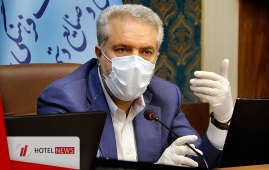
“Corona is a fact, but can the virus stop tourism? Certainly not. For us, the coronavirus is a new experience in dealing with crises that teaches tourism experts around the world how to deal with such a disaster, and thankfully governments are turning this into an opportunity for better planning,” Ali-Asghar Mounesan said, ISNA reported. He made the remarks in a video showcased on Tuesday evening during a prize-giving ceremony in which a select of tourism businesses, tour operators, investors, and hoteliers were honored. “Tourism experts will certainly find a way to deal with this great crisis. As if the measures so far been taken in Iran and all over the world show that we will surely succeed [to make a big rebound] through proper smart planning.” Addressing the attendees to the ceremony, the minister explained; “Investments and the launch of new projects in the tourism sector have been increased dramatically underway across the country. Of these, about 600 are hotel-related projects that show a very promising future, conveying a message that investors see profitable prospects for Iran’s tourism.” Elsewhere in remarks, the official said “We are not saying that tourism should [merely] replace oil [revenues], but tourism can become first [sector of] economy in the country replacing revenues [currently being come from [the export of] mineral and raw resources.” “Tourism can create an easy way to earn and create employment by tapping into the existing historical and natural capacities of the country.” Mounesan has long been attaching importance to tourism as a source of revenue, which could substitute petro-dollars. Back in 2017, he said: “Every single foreign tourist visiting Iran spends an average of $1,200, bringing in income as much as exporting 30 barrels of oil.” Referring to the pandemic and its impacts on the traveling sector, he said: “All the economists in the world have predicted [dramatic] changes and developments for many once-prosperous sectors….. However, the technology is advancing, and smart solutions… will certainly bring changes in the world's economic sectors.” In June, the United Nations World Tourism Organization praised efforts made by Iran’s tourism ministry to manage the travel industry during the coronavirus pandemic. UNWTO Secretary-General Zurab Pololikashvili said in a letter to Mounesan that the country's measures have truly earned plaudits to mitigate the impact on tourism. “A series of measures that the Ministry of Cultural Heritage, Tourism and Handicrafts of Iran has taken, in accordance with the guidelines and recommendations of UNWTO, has truly earned plaudits as an effective practice to mitigate the impact on tourism,” the letter reads. Some experts believe that the coronavirus pandemic may turn tours and travels into luxury items as observing health protocols will raise the cost of travel in the country. Mohammad Ali Vaqefi, the vice president of the Iranian Tour Operators Association, warned earlier in June that with the continuation of the coronavirus outbreak, tourists may prefer individual travel rather than tours, adding that they may also choose to go on a trip by their vehicles and stay in tents or in the nature instead of hotels. In the global scene, part of the new travel puzzle is the jet-set mindset focusing on tough hygiene care and social distancing as cardinal guidelines for slowing the spread of the virus. So the average expenditure will be raised for a typical traveler particularly inbound passengers so lesser ones can afford to buy privacy and space and safer travel amenities. Meanwhile, deputy tourism minister Vali Teymouri, has said the tourism industry of Iran will get back on the right track sooner than expected thanks to measures taken to tackle the spread of coronavirus. “I believe that tourism industry of the country will get back on the right track far sooner than generally expected thanks to the measures taken to deal with the spread of coronavirus in tourist destinations, hotels, stopovers, and all the centers which are affiliated with the Ministry of Cultural Heritage, Tourism and Handicrafts,” Teymouri said. Iran expects to reap a bonanza from its numerous tourist spots such as bazaars, museums, mosques, bridges, bathhouses, madrasas, mausoleums, churches, towers, and mansions, of which 24 being inscribed on the UNESCO World Heritage list. Under the 2025 Tourism Vision Plan, it aims to increase the number of tourist arrivals from 4.8 million in 2014 to 20 million in 2025. The latest available data show eight million tourists visited the Islamic Republic during the first ten months of the past Iranian calendar year (started March 21, 2019).
Create: Aug 5, 2020 Edit: Aug 6, 2020 Regional News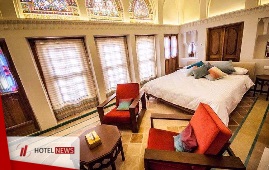
Iran's Deputy Minister of Tourism announced; After nearly a year of efforts by the working group to develop rules and technical standards for tourism facilities; The rules and regulations for converting valuable historical and cultural buildings into traditional accommodations and hotel boutiques, as well as the evaluation and rating indicators of these accommodation centers, were prepared and announced by the Minister of Tourism.
Create: Jul 17, 2020 Edit: Jul 17, 2020 Regional News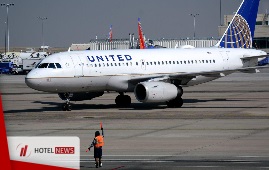
Despite many efforts to reduce costs and compensate for the loss caused by declining travel demand, the US airline has been forced to send letters of resignation to 36,000 employees. According to the company's executives, the most difficult conditions will be for the travel crew and about 15 to 25 thousand people will be asked to leave the company. Following the release of this news, the value of United Airlines shares in the global market decreased by 3.3%. .
Create: Jul 9, 2020 Edit: Jul 13, 2020 International News
Technique 139 Ask About Travel Experiences; Offering redress for problems not caused by the hotel can be a key driver of guest satisfaction. For example, if a guest mentions travel-related problems experienced before arrival, the hotel should offer an amenity or upgrade as an expres- sion of empathy and comfort. Front desk associates should be encouraged to ask guests how their trips were because doing so increases the probability of finding out about travel-related frustrations. Technique 140 Thank Guests for Complaining; All associates should be trained to thank guests when they voice valid complaints. Such a thank you encourage guests to communicate problems directly with the provider as opposed to posting complaints on social media forums. Thanking the guest for voicing the complaint also signals that the problem is less likely reoccur in the future. Technique 141 Ask What Would Fix the Problem; If a guest voices a valid complaint, after listening, empa- thizing, thanking the guest, and apologizing, the hotel asso- ciate should ask the guest what the hotel can do to fix the problem. Most guests will ask for very little which presents the opportunity to deliver more than what was asked—spawning guest delight. Technique 142 Organize Recharging Cords; Recharging cords for mobile electronics are perhaps the most commonly left items in the rooms; thus, most hotels have excess in lost and found since many guests never call for them. Therefore, the hotel should have a selection already identified by phone/computer type. When a guest asks where to buy one, or if they ask to borrow one from the hotel, they will be readily available for them to use with no hassle. Technique 143 Be Ready for Clean-Up; The front desk agent should always have immediate access to both cloth towels and paper towels and should be on the look-out for guests in need of them. They can be offered if a guest comes in from the rain, if an infant spits up, etc. Technique 144 Have Shower Chairs and Bath Mats Readily Available; While all hotels have handicap rooms, at times, an elderly person or a person with an ailment may want “more protection” while in the shower. A shower chair and rubber bath mats are good to have on hand. Technique 145 Offer Hot Chocolate During Inclement Weather; Whether driving or flying, guests’ stress levels increase significantly when they must attempt to travel in snow or ice. Hot chocolate should be available in the lobby in such circumstances. Technique 146 Let Guests Keep Umbrellas; The hotel should have an abundance of umbrellas at the front desk for guests to use when needed. If a guest says s/he will drive the car around and return it later, let them keep the umbrella (they can be purchased inexpensively at a dollar store). Technique 147 Organize Unclaimed Items Suitable for Borrowing; Many times clothing, belts, etc. are left in lost and found. If the items remain unclaimed, they can be used for guests to borrow if forgotten to pack. A closet, or part of a closet, can be dedicated to these items. Technique 148 Be Informed About Guest Assistance Information; Guests continue to have more special needs as it relates to medical and dietary. Ensure that desk and restaurant staffs have the basic knowledge to assist the guests with these concerns. The key is where to direct them so they can get the information they need, such as what restaurant serves the needed food; pharmacy information; dentist information; or medical emergency information. To have information ahead of time will help when the need arises so the situation can be dealt with immediately. Technique 149 Have a List of Languages Spoken by Staff; Many hotel personnel speak multiple languages. Have a list of any employee that speaks different languages. When there is a guest who needs additional interpretation it will be helpful to know who the employees are that can help them. With foreign travel getting stronger, this is very valuable to the hotel. Technique 150 Have a System for Handling Verbal Communication Barriers; If an associate does not speak English, then s/he should carry cards to give to the guest so when they ask a question, they can explain this and direct them to someone who can help immediately. The staff member can also have a pen and paper readily available to help facilitate communication; be sure there is a system in place for this sort of communication. To ignore the guest is a failure in guest service. Technique 151 Recognize Employees for Exceptional Service Failure Recovery Efforts; If an associate goes the extra-mile to solve a guest’s prob- lem, take a digital photo of the associate and write a few sen- tence narrative about what s/he did in the situation. Use the narrative and photo to make a small poster that can be hung in the employee break room.
Create: Jul 5, 2020 Edit: Aug 13, 2020 Hotel Management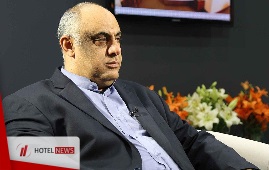
Reza Hamedani, a member of the board of directors of the Kish Hoteliers Association and the managing director of TopTurz Tourism Holding, said; The entire cost of disinfecting and implementing health protocols on Kish Island is paid by the private sector. Efforts have been made to run all flights while maintaining health protocols. Passengers, Of course, must cooperate and observe health protocols in public places.
Create: Jun 3, 2020 Edit: Jun 3, 2020 Regional News
Technique 112 Host Menu Tastings for Staff; All frontline staff in the hotel should have knowledge of the restaurant menu items. This knowledge is needed in order for them to feel confident in making recommendations and upselling. In this effort, staff should periodically be invited to taste items. Technique 114 Hang a Mirror in the Service Area; Hang a full-length mirror in the expo area of the kitchen so that servers can check their appearance throughout their shift. Technique 115 Identify Congestion Points in the Breakfast Buffet; Due to the sheer number of guests that dine in the hotel for breakfast, it is the most important meal period for the hotel to get right. In a buffet setting, management should routinely observe where guest congestion is prone to occur during the buffet experience. Often, congestion points can be alleviated with better signage, altered buffet layout, and by repositioning certain items. Technique 116 Improve Efficiency at the Made-to-Order Egg Station; Often, the congestion point in the hotel breakfast expe- rience is the made-to-order egg station. Typically, this con- gestion occurs because the chef working the station is not properly trained. The chef should be trained to begin heat- ing the saute pans as s/he sees guests approaching the station. In addition, toppings should be finely diced so that they can saute faster. When no guests are in view of the station, s/he can practice his/her flipping speed and accuracy by using a slice of bread in the pans. S/he should also be well stocked with both egg whites and egg substitutes because the demand for these items is increasing as baby boomers age. A well-trained chef should be able to prepare three orders simultaneously at the station (always keep a fire extinguisher at the station). Technique 117 Improve Efficiency at the Belgian Waffle Station; A common congestion point in the breakfast buffet area is the Belgian waffle station. Substituting the typical waffle irons with irons that can produce four miniature waffles simulta- neously should alleviate some/most of the congestion. Rather than taking a full-sized Belgian waffle (which is too large for most guests who also want to try other foods), the guest can instead take two mini-waffles. Technique 118 Have a To-Go Breakfast Option Available; If a guest requests an early wake-up call or asks to get a cab at a time before the restaurant opens, offer a bagged breakfast that can be made up the night before. Items in the to-go break- fast bag might include a muffin, breakfast bar, apple, bottled water etc. This to-go breakfast does not have to be complimen- tary; this gesture of goodwill goes a long way. Technique 119 Offer Customizable Chef Hats to Children; Rather than standard coloring sheets, the restaurant should instead have paper chef hats for small children that can be colored and decorated. Technique 120 Offer Origami Kits to Children; Rather than standard coloring sheets, the restaurant should instead have origami kits for elementary-aged children. Technique 121 Let Small Children Play with Dough; If the restaurant uses bread, pastry, or pizza dough in any recipes, small children should be offered a small piece of dough on a paper plate that they can play with while waiting for meals. Technique 122 Inscribe Surprise Messages Inside Coffee Cups; The inside of some of the restaurant’s coffee cups can be randomly inscribed with messages such as “We hope that you are enjoying your stay!” Technique 123 Use Strong Language When Greeting Restaurant Guests; Restaurant greeters should never use the word “JUST” when verifying the number of guests in a dining party. If there are “just” 1 or 2 people, the word diminishes the worth of the diners who are present. Welcome all equally. Technique 124 Extend VIP Invitations to Valued Guests; If a local is dining in the restaurant, invite him/her to be a VIP at an upcoming menu tasting or wine tasting. Technique 125 Play Peek-A-Boo; Servers should be trained that one tactic that can be used to bring a smile to a baby’s face is a quick game of peek-a-boo while visiting the table. Technique 126 During busy breakfast periods, often tables cannot be turned because there is a lag in bussing, cleaning, and reset- ting them. Bussers should be staffed heavily, bussers should be compensated well (maybe through a tip pool), associates from other departments should be cross-trained as bussers, and ample supplies should be on hand for table reset. Often, when associates from other departments aid in bussing and reset- ting, they are so poorly cross-trained that their help is ineffi- cient and can even get in the way. Furthermore, the breakfast restaurant supervisor or manager should have a laminated checklist of all table resetting supplies and should check the par levels of all of these items before a shift begins. Technique 127 Have a Children’s Treasure Chest Available; Treat the child guest with a treasure chest of toys. The hotel does not have to spend a lot of money on the toys; they can be from the dollar store or similar. Let the child pick a toy from the chest. The child will be happy and excited and the adult guest will be very appreciative. This is an excellent and inexpensive way to exhibit outstanding guest service at the commencement of a dining experience. Technique 128 Use Language That Encourages Dessert Upselling; “Are you too full for dessert?” When a server asks this question it assumes that the guest does not want dessert and s/he wants to turn your table; not a positive ending to a dinner. Instead, servers should be taught to upsell desserts with lines such as “We have fabulous desserts;” “I hope you left room for one;” and “Let me tell you about them.”
Create: Jun 3, 2020 Edit: Aug 13, 2020 Hotel Management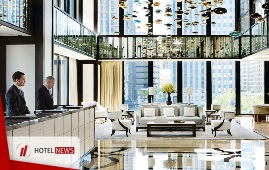
Technique 86 Display High Quality Outdoor Furniture; All outdoor furniture should be of high quality (even at limited service and economy properties). Viewing outdoor furniture subconsciously sets the tone for what the guest will receive once inside. Technique 87 Keep Elevator Flooring Clean; Due to the use of rolling suitcases, one of the biggest prob- lem areas with regard to public space cleanliness is the elevator floor. Staff should be trained to check and clean the flooring in the elevators several times per shift. The cleanliness of the ele- vator is a factor in initial perception formation and also influ- ences guests’ perceptions throughout their stay. Technique 88 Offer Branded Rubber Duckies; When a family with a small child or baby passes a house- keeping cart in a corridor as they are returning to their gues- troom, the housekeeper should offer the family a rubber duckie that is branded with the hotel’s name/logo. ghout their stay. Technique 89 Create a Photo Zone; Photo Zone—With Selfies being the “in thing”, cre- ate a backdrop, banner, or something unique to the hotel (including your logo or hotel name) where guests can take pictures of themselves or, if they want a photo with a cam- era, an employee can easily take a picture of the guests. Encourage guests to share it on social media or a blog. This is another way for guests to remember their experience in a positive way. Technique 90 Routinely Eliminate Scuff Marks; At least two times per week, a member(s) of the engi- neering team should inspect all public corridors and remove scuff marks from walls with cleaning products such as Magic Erasers. This task should be part of the engineering team’s preventative maintenance schedule. Technique 91 Play Music in the Lobby; Music that matches the brand personality of the hotel should always be played in the lobby. Employees should under- stand the value of the music in reinforcing brand personality. Technique 92 Scent the Lobby; The hotel’s lobby should be scented year around with the same fragrance. Repeat guests will recall the scent when they return. This strategy can be achieved through plug-in aroma- therapy products or by burning scented candles. Technique 93 Afford Adequate Attention to Restroom Cleanliness; The public restroom cannot take a “rest” from service. The cleanliness and messiness of a restroom set the tone for other facets of a guest’s experience. If a guest sees a dirty restroom, automatically s/he will have a negative impression of the hotel. Technique 94 Use Bright Lighting in the Restroom; The hotel’s public restrooms should have very bright flu- orescent lighting. Such brightness helps the restroom appear clean. Technique 95 Give Back-of-the-House Tours; When a potential catering and conference client arrives for a site visit, show him/her the back-of-the-house areas first. Including the back-of-the-house demonstrates that the hotel pays enough attention to detail to keep those areas neat and orderly similar to the front-of-the-house. This effort also aids in making the potential client feel as if s/he is getting to know the team. Technique 96 Provide Employees with Business Cards; Have business cards with all the pertinent hotel informa- tion. Leave space on the card for an employee to be able to handwrite his/her name and position. Should a guest need hotel information, the employee can hand them out. This effort serves as a personalized service and the guest will know who to ask for if they need anything. This gesture comes in handy on many occasions and is fast and personalized as well. Technique 97 Offer Branded Gloves; If a guest is exiting the hotel in the winter time without gloves, offer a complimentary pair of gloves branded with the hotel’s logo. Technique 98 Display a Looking Glass; If a window in one of the hotel’s public spaces has a nice view, then affix a looking glass on a string to the wall next to the window. Technique 99 Screen the Outdoor Break Area from Guest View; The hotel needs to have an outdoor break area for asso- ciates that are 100 percent screened from guest view. Such screening can be achieved with landscaping and/or decorative fencing. When a guest sees hotel associates on break smoking cigarettes, this is one of the biggest ‘experience breaking’ prob- lems in the industry and is also one of the most common. Technique 100 Offer Wagon Rides for Small Children; The hotel should have wagons in the lobby that are cus- tomized with a seat and side paneling so that families can give their children safe rides to their guestrooms. Custom- ized wagons can also be available for pet transportation to the guestroom. Technique 101 Have a Child-Sized Luggage Cart Available; Just as some grocery stores have child-sized grocery carts, a hotel can have a child-sized luggage cart. The child can help co-create the lodging experience by placing his/her suitcase on the small cart and pushing it to/from the guestroom at check-in/out. Technique 103 Make Bicycles Available; If the hotel is located in a bicycle-friendly area, then have some bicycles and helmets available to the guests at no charge. Guests can sign a liability waiver form and borrow the bicycles when desired. Technique 104 Denote Empty Parking Spaces; When the hotel’s parking lot or garage is near maximum capacity, helium balloons should be placed in the remaining parking spots. Viewing the balloons from a distance will allow guests the opportunity to find the open spots without wasting time or fuel. Technique 105 Encourage Clutter-Free Storage Areas; Any areas that are visible to the guests when a door is open (e.g., service area, behind the front desk, office, storage room, etc.) should be free of clutter and anything that can be construed as unsanitary. Technique 106 Conduct Signage Audits; At least once per year, a 3rd party who has never been inside the hotel before should be asked to do an internal and external signage audit to confirm that signs are accurate and are not confusing (particularly directional signs). The signage audit could be traded for a room night. Technique 107 Print Hometowns on Nametags; All associates should have their hometowns printed on their nametags because this information helps facilitate con- versation with guests. Technique 108 Display Photos of Famous Locals; Display pictures of famous people from the local or sur- rounding area in the hotel’s public spaces—doing so helps connect the guest to the hotel. Technique 109 Offer Swimming-Related Amenities in Pool Area; If the hotel has a swimming pool, guests love the extras of a pool experience, especially in very hot weather. These items can be misters, cold washcloths, ice water, etc. Technique 110 Offer to Augment Diving Toys with Gold or Silver Coins; If the hotel has a swimming pool, if children are seen diving for coins, they should be given gold or silver coins inscribed with the hotel name/logo to use instead. They can keep these as souvenirs. Technique 111 Keep a Well-Stocked Bookcase; The hotel should have a bookcase in a public area from which guests can borrow books (including children’s books) to read or games to play during their stay. Some books should be about the local area.
Create: May 2, 2020 Edit: Aug 13, 2020 Hotel Management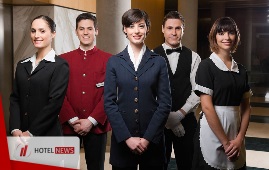
The Check-In Experience Technique 45 Use Strong Verbal Greetings at Check-In; A front desk associate should never address a guest with the phrase ‘checking in?’ Such a greeting does not engender a spirit of hospitality. Would an initial greeting to a visiting friend at your home be ‘staying with me?’ Technique 46 Eliminate the View of Employee Trashcans; A trashcan does not engender a sense of hospitality. Trash- cans used behind the front desk should be positioned so that guests cannot see them. Technique 47 Offer Infused Water at Check-In; During prime check-in hours, keep a beverage dispenser of infused water in the lobby area. Guests can be instructed to help themselves to the water that can be infused with flavors such as strawberry or cucumber. Technique 48 Dispense Information on Tour Bus; If your hotel has tour buses staying at the hotel, have a representative get on the bus before the guests disembark. The hotel representative will have an opportunity to welcome the guests to the hotel, explain outlet hours, and any perti- nent information regarding their stay. If they have to wait in line to give a credit card, they can be instructed at this time. Once they enter the hotel you will lose the “togetherness” of the group. Technique 49 Designate a Children’s Check-In Spot; If a significant number of family check-ins are expected on a given day, designate a spot at the front desk with a sign reading ‘children’s check-in’ and place a step-stool at the spot so that children can see over the front desk. As a component of the children’s check-in, the child could be asked if s/he would like to provide a signature on a document. Such a signature request might be the first time the child has ever been asked for his/her signature. Technique 50 Use High Quality Pens at the Front Desk; Always have an ample supply of high-quality pens at the front desk for guests to use while checking-in. At least one person per group must physically touch the pen. The use of a high-quality pen is a subconscious signal of attention to detail. Technique 51 Incorporate a Guessing Game for Children; Keep a cardboard box with a hole in it behind the front desk. When a child is checking-in with parents, if the front desk is not too busy, ask the child if s/he would like to feel inside the hole and guess what the box contains. If the child guesses correctly, then s/he wins a prize. Unique objects such as a pine cone can be the touch-item in the box. Prizes can be small trinkets ordered from a vendor such as Oriental Trading Company. Or, a series of three boxes can be set-up and if the child guesses all three items correctly then s/he can be issued a certificate. Technique 52 Offer a Pet; When a child is checking-in with parents, ask the child if she brought a pet. When she says ‘no’ ask her if she would like a pet for the duration of her stay. When she says ‘yes’ then let her pick a fish from a fish tank and put it in a fish bowl in her guestroom. Technique 53 Have Word Search Puzzles and Coloring Sheets at the Front Desk; Welcome the children checking in as well as the adults. Surprise them with a word search puzzle or coloring page directly relating to your hotel. Such items occupy the child’s time as well as make them feel welcome. Technique 54 Offer a Sticker Treasure Hunt; At check-in, young children can be given sticker books. They can collect more stickers for the books by either visiting various locations around the hotel or by visiting local attrac- tions. This effort, in essence, serves as a treasure hunt by means of the sticker book. Technique 55 Host a Nutella Party; On a day with a large number of family check-ins, a sign can be placed at the front desk announcing an evening Nutella party for the children. Technique 56 Offer a Dog Training Class for Children; If someone on the management team has a well-trained dog, then s/he can periodically place a sign in the lobby read- ing ‘Dog Training Class at 4:00 PM.’ The manager can bring his/her dog and demonstrate some of the commands that the dog knows for the children. Technique 57 Allow Guests the Opportunity to Jog with Members of the Management Team; At check-in, guests can be invited to go on a group jog with a member of the hotel’s management team at a set time in the A.M. The group jog can occur every morning by rotating the responsibility between several members of the manage- ment team who enjoy jogging. Conversations during the jog will help solidify bonds between the hotel and guests. Technique 58 Roll Out the Red Carpet; Periodically roll out a red carpet near the entrance of the hotel (or inside the lobby leading to the front desk). Manage- ment can be creative with the signage which can read “Wel- come to Hotel X, where red carpet treatment is the norm” or “Red carpet treatment at a value.” Technique 59 Offer Treat Bags for Pets; How you treat a guest’s pet is very important. If a guest pays for a pet to stay at a hotel, then the pet is likely consid- ered a member of the family. Create a treat bag, distributed at check-in, which contains a treat, directions on where to take the pet to go out, a poop bag, and the “rules” for the pet room. Technique 60 Remember Pet Names; Front desk agents should be taught to record pet names in the guest history section of the property management sys- tem. Along with the pet’s name, the agent should also insert a short (3–4 words) physical description of the pet. When the pet revisits, s/he should be addressed by name. Technique 61 Offer Aromatherapy; If a guest mentions that s/he is stressed for any reason (e.g., travel or work frustrations), offer him/her a plug-in aro- matherapy treatment that can be used in the guestroom to relieve stress. Technique 62 Offer Free Upgrades on Occasion; If a guest mentions that s/he is stressed for any reason (e.g., travel or work frustrations), offer him/her a complimen- tary upgrade to a suite-style room (if available). Technique 63 ‘Google Image’ Guests with Unique Names; If a front desk agent has some downtime between tasks, then s/he should be taught to search the arrival list for guests who have visited in the past and who have unique names (e.g., Vincent Magnini). The agent can then “Google Image” those names so that the guest can be greeted by name upon arrival. Technique 64 Create a Strategic Alliance with a Car Wash; The hotel could establish a strategic alliance with a mobile waterless car wash provider. Each front desk associate can be empowered to select one incoming guest each day and ask them if s/he would like a complimentary exterior car detailing during their stay. Conversely, the 10th guest checking in every day could be made the complimentary offer to help ensure fairness. Technique 65 Record Guests’ Preferences; Repeat guests want to be recognized. Frontline staff should utilize the computer system to keep information on the guest’s desires such as room type, location, favorite drink, etc. Technique 66 Drive Bookings to the Proprietary Website; If a front desk agent sees that a regular guest is using a 3rd party OTA to book his/her room, the agent should inform the guest that equivalent rates can be found on the hotel’s propri- etary site. It should be explained that the savings in fees and commissions by the hotel would be used for additional guest services and amenities.
Create: Mar 14, 2020 Edit: Aug 13, 2020 Hotel Management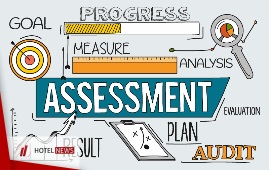
Frontline Employee Feedback and Evaluation Technique 39 Incorporate Service Assessment in Performance Evaluations; The standard form on which to complete all associates’ written performance evaluations should contain a section eval- uating customer service. For back-of-the-house employees, items such as teamwork and dependability can be addressed in this section as these items impact guest satisfaction scores. Technique 40 Mystery Shop Telephone Etiquette; Hotel associates’ telephone habits and etiquette should be shopped at least once per quarter. Are the hotel’s telephones answered promptly? Does the hotel representative identify himself/herself by name? Is the reservationist enthusiastic? Technique 41 Offer a Balance of Positive Feedback; Managers and supervisors cannot be complacent and must give constructive feedback whenever needed. Therefore, in an effort to avoid being perceived a negative or a ‘nitpicker,’ each manager or supervisor should not go home for the day without giving at least six positive pieces of feedback to associ- ates (e.g., “your shoes are nicely polished;” “I like the way you phrased that response to the guest inquiry,” etc.). Technique 42 Mystery Shop Customer Service; The hotel should use one mystery shopper guest every quarter to evaluate customer service at the various hotel/ guest points of contact. In some quarters, the mystery shopper should be disguised as a business traveler and in other quar- ters, the mystery shopper should be accompanied by a friend and be under the guise of a leisure traveler. Technique 43 Set Cross-Training Goals; In the section of the associate performance evaluation in which goals are set, all associates should have at least one goal related to being cross-trained on a new area within his/her department or in a different department. Technique 44 Allow for Self-Assigned Goals; In the section of the performance evaluation in which goals are set for the associate, s/he should be permitted to set at least one goal for himself/herself. The associate needs own- ership and buy-in on the goals.
Create: Feb 29, 2020 Edit: Aug 13, 2020 Hotel Management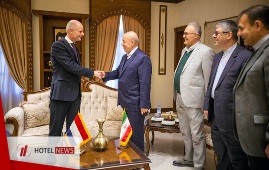
Foreign Minister of the Netherlands Stef Blok said on Friday that his country is willing to expand economic and tourism relations with Iran, particularly with Isfahan province. “We came to Isfahan because we have heard a lot about the rich culture and hospitality of the people here,” Blok said in a meeting with Isfahan Governor General Abbas Rezaei. “Government of the Netherlands is ready to boost economic relations as well as tourism exchange with Iran, especially with Isfahan,”. Talking about U.S. sanctions against the Islamic Republic, the Dutch official noted that over the past two years, sanctions have limited bilateral cooperation, adding “Efforts are being made to expand cooperation [despite economic sanctions].” Rezaei for his part said the ground is fertile for expansion of bilateral tourism relations with the aim of hosting Dutch tourists in Isfahan.
Create: Feb 28, 2020 Edit: Feb 28, 2020 Regional News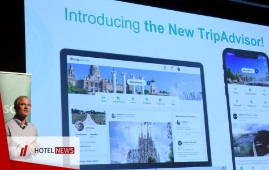
In its continued quest to help restaurants better manage their business and take control of their reputation online, Tripadvisor® launched Review Hub, a new interactive portal that allows restaurant owners to view consumer reviews of their business and quickly respond to them all from one convenient dashboard, whether the review was shared on Tripadvisor, TheFork, Google, Facebook, Yelp, or other major review sites. "Few restaurant owners have time to log into each of the various restaurant sites one-by-one to respond to their diners' reviews, so we're excited to give them one tool to manage these reviews in less time," said Bertrand Jelensperger, senior vice president of Restaurants, Tripadvisor. "Review Hub is the latest example of Tripadvisor's efforts to make online restaurant marketing and management a breeze for busy owners." How Review Hub Works Review Hub displays a snapshot of ratings and reviews from multiple platforms, and lets owners click through to explore their unique review trends in more depth — so restaurateurs can see what's working and where they can further improve their customer experience, with a complete range of reviews from multiple sites. There, they can quickly respond to each review with a thoughtful management response, thank their guests for their feedback and share their side of the story. The management response they share is then automatically posted on the site or app where the review was originally submitted by the diner, making online reputation management easier and less time consuming. Review Hub is a subscription-based product available to all restaurant owners, operators and digital marketing teams, and can be subscribed to on a monthly or annual basis, and is now available in all markets where Tripadvisor operates. The Importance of Responding Research shows that over 90% of diners say restaurant reviews matter when choosing a place to eat, showing how important it is to pay attention to what customers are saying online. Online reviews not only show the experiences of past customers, but also allow owners to show the best of a business to potential future customers looking for a place to eat. The IPSOS Mori Study, which polled over 23,000 diners worldwide, also showed that six out of ten (63%) respondents said they would be more likely to book if the owner responds to the majority of reviews. And when a restaurant owner leaves personalised responses to reviews, over three-quarters (77%) of respondents said they were more likely to book as a result. IPSOS Mori study Methodology The Power of Reviews project surveyed 23,292 Tripadvisor users across 12 markets (Australia, China, France, German-speaking, India, Italy, Japan, Singapore, Spain, Taiwan, United Kingdom, United States) between May and June 2019. The survey targeted users who had visited the site in the last 12 months. The sample is made up of Tripadvisor users who had opted into a survey panel and were invited to participate in the research via an email link directing them to an online survey platform. Ipsos MORI were involved in questionnaire design and data analysis. Results are weighted to represent the residency profile of Tripadvisor users across participating markets.
Create: Feb 9, 2020 Edit: Feb 9, 2020 International News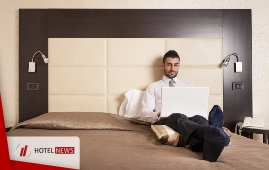
INTRODUCTION With new technology trends such as the internet of things (IoT), many businesses have been able to improve their operations as well as make them more up to date. In the hotel and hospitality industry, technology has helped make many hotels and resorts more efficient as ones that are capable of providing better service for their guests. Technology in the hospitality industry has been able to capitalize on the internet of things (IoT) by providing a better user experience for guests. Today, guests can make reservations through an application and schedule their stay with their smartphones. Along with the internet of things, technology in the hospitality industry has also included new and more advanced software. The new hospitality technology has greatly advanced the operations of hotels in terms of allowing guests to get rooms and gain access to all of the available services offered. Today, the new hospitality technology can help hotels schedule events more efficiently, process room reservations and monitor revenues and financial transactions more easily. The development of hotel and hospitality software has enabled hotels to be even more organized than they have been in the past. As a result, they are even more likely to provide more satisfaction for their guests consistently. SMART GUEST EXPERIENCES Today many hotels have followed some key trends that have allowed them to better meet the unique needs of their guests. Along with using cloud-based software, hotels nowadays have become more personalized as they are even more focused on helping their guests have the best experience possible when staying at their establishment. In recent years, there has been a tech explosion in the hotel and hospitality industry. The use of cloud-based software has allowed hotels to more efficiently manage their transactions and daily tasks. It has also allowed guests to rely on apps and mobile websites to make requests and get the services that they need for their stay. This technology has helped make a modern hotel into a smart hotel as they have become more user-friendly. Another trend that has contributed to the development of the modern smart hotel has been seamless technology. This includes features such as mobile check-in and digital concierge services. Today, hotels provide high tech cards that detect the presence of a guest and open the door before they even get to it. This has provided guests with more convenience as they can just walk into their room instead of sliding a card into it. Mobile check-ins have enabled guests to process their arrival digitally and avoid relying on a front desk clerk to complete this task for them. As a result, both the guests and the hotel workers can save a lot of time. 7 TECH TRENDS YOU CAN’T IGNORE IN 2020 In the past hotels were just places for people to sleep and unwind during trips when they were away from home. However, there has been a lot of change in the industry during the past several years. Today, hotels have become places where several activities take place. These include seminars, business meetings, and conferences. There have been many additional hotel technology trends that have drastically changed the industry. 1. MOBILE DEVICES AS DOOR KEYS One of the most recent hotel technology trends has been the development of mobile devices as door keys. Hotels today provide cards that are items that put data onto a guest’s mobile device. With this card, guests can more easily access their rooms and other areas of the hotel such as the gym and spa. These cards can also be visually scanned to process entry into these areas of the hotel. 2. SERVICE AUTOMATION In recent years hotels have allowed guests to serve themselves. Most guests prefer to use technology rather than interact with humans. As a result, the development of remote check and check out has allowed guests to use apps to complete these menial tasks. Since the new technology has created more automation, both guests and hotel workers can spend more of their time focusing their efforts on other activities. 3. FIXED MOBILE CONVERGENCE Over the past few years, room phones in hotels have had a reduced role in use among guests. However, the room phones of the present and future will often provide a larger role in terms of connectivity. Today, a guest can use their mobile phone to control things such as the television, the sound system and the blinds of their room. They can also use the mobile phone to request wake up calls, get informed about a visitor’s arrival and requesting a cab or driving service to transport them around town. 4. GUEST APPS The new technology in the hotel industry has resulted in new guest apps. These are options that allow guests to receive information on new hotel deals, notifications about hotel services and also loyalty programs. The guest app can also provide an itinerary to an event as well. 5. BANDWIDTH With the development of technological devices such as laptops, smartphones, and tablets, the demand for bandwidth is very high. As a result, hotels have significantly increased the amount of available bandwidth to accommodate guests who frequently access the internet for the devices. 6. LOCATION-BASED SERVICES New location-based services have also emerged as a key to the advancement of technology in the hospitality industry. With location-based services, guests can locate hotel workers and staff more easily. As a result, they can more efficiently get the assistance they need whenever necessary. 7. TECH LOUNGES Another new trend in the hotel and hospitality industry has been tech lounges. With tech lounges, hotels can provide guests with a public space to use technological devices and complete tasks using technology. The new tech lounges have become a preference among many guests in recent years. CONCLUSION Like all other industries, the hotel and hospitality industry has undergone many significant changes over the past few years. Hotels have made these changes with the help of the latest hospitality and travel software. With this new hospitality and travel software, hotels have been able to help themselves operate more easily as well as satisfy the needs of their guests. During the last few years, hotels have introduced several technology options that include automated check-ins, staff location services, mobile door keys, and tech lounges to provide a more fulfilling experience for guests.
Create: Jan 26, 2020 Edit: Jan 26, 2020 International News
